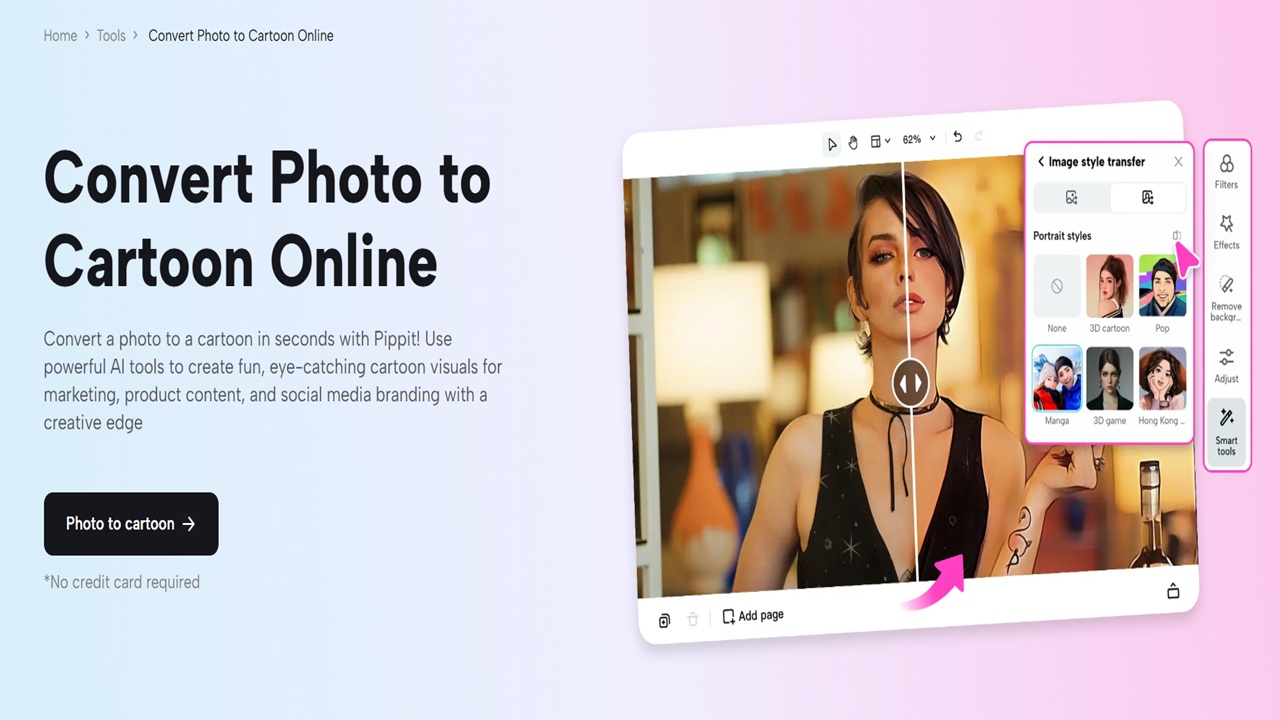Visual aids serve as essential tools to improve educational experiences within the training environment. Cartoonized photos have become popular because they create engaging and memorable learning materials. Educators can use Pippit AI’s advanced photo to cartoon converter to convert photos into animated, colorful visuals that bring creativity to their educational content. The following list presents the best five methods to employ cartoonized photos through Pippit AI for educational and training purposes.
Enhancing Visual Learning Materials
The educational use of cartoonized photos reaches its peak when educators integrate them into visual educational materials. Educational resources, including textbooks, online courses, and presentations, become more appealing when cartoons are added to their content. Cartoonized pictures of historical people alongside scientific ideas and geographical places create learning materials that students can understand better. Through its AI-driven converter, Pippit enables educators to convert their images into cartoon-style visuals, which create an exciting approach to presenting complex educational material. The use of cartoonized photos in educational content enables teachers across all subjects to establish welcoming classrooms that promote student interaction. Pippit brings personality to educational resources, which turns monotonous conventional material into captivating content that students find intriguing.
Interesting Learning Systems and Educational Materials by Pippit AI
Educators now prioritize making visually appealing content for their online courses because e-learning has become more prevalent. Educational platforms can be made interactive through the use of cartoonized photos as a development method. Educators simplify complicated subjects through cartoonized photo transformations, which help explain hard-to-understand scenarios. The teaching of customer service through cartoonized photos demonstrates various customer interactions to students. The training materials incorporate positive and negative scenarios through visual elements, which enhance student understanding of real-life applications. The cartoon converter from Pippit maintains high-resolution quality in images, which makes them appropriate for professional e-learning environments that need visually appealing content. Students benefit from a more interactive training experience that stays in their memory better.
Creating Instructional Videos Becomes More Exciting
Modern training and education heavily rely on instructional videos as essential educational tools. Students benefit from hands-on learning through these tools, which help them see abstract concepts. Educators can enhance video engagement through the use of cartoonized photos generated by Pippit AI. The software usage tutorial uses cartoonized images of the interface, which helps students track the instructions more easily. Cartoons serve as visual tools that help explain complex processes by showing step-by-step instructions for new tools as well as website navigation. Educators can simplify complex ideas through animated characters and visual metaphors, which create an engaging, dynamic learning experience for viewers. Educators benefit from Pippit’s real photo-to-cartoon conversion speed because they can make visually engaging instructional videos without needing advanced design expertise.
Interactive Gamification for Student Engagement
The educational practice of gamification continues to grow in popularity because it helps students stay motivated during their learning activities. Educational games that incorporate cartoonized photos create an exciting learning environment that maintains student engagement throughout the activity. Through Pippit AI, educators gain the ability to develop custom avatars or game characters that depict both students and important learning concepts. Educational math quizzes can use cartoon versions of mathematicians and fictional characters as visual elements to enhance learning excitement. The characters became accessible to students through question responses that revealed new levels or puzzle solutions. Students become more engaged in learning because the cartoon images present an exciting and enjoyable experience that leads to active game participation. Educational gamification strategies that incorporate cartoonized photos enable teachers to convert ordinary lessons into dynamic, competitive activities.
Facilitating Cultural and Emotional Learning
The use of cartoonized photos serves as an effective method for advancing cultural and emotional education. Educators can utilize cartoons to present diverse situations and emotional expressions, as well as culturally important events in their social studies and psychology, and diversity training classes through respectful and accessible methods. Educators can teach empathy and emotional intelligence through cartoonized characters that illustrate social situations by showing different emotional expressions and body language. The AI-powered tool from Pippit enables users to transform photographs into animated characters that display different facial expressions and poses, thus providing students with a secure environment to explore emotional complexity. Educational use of cartoonized images enables instructors to teach students about emotions and relationships as well as cultural differences, which leads to essential interpersonal skill development.
Conclusion
Cartoonized photos present a distinctive method that proves exceptionally effective for educational training purposes. Educational content creation becomes simpler for teachers through Pippit AI’s advanced photo-to-cartoon conversion tool. Educators can use cartoonized photos to create endless possibilities that include enhancing visual materials and designing interactive online courses while adding game elements and promoting emotional development. Educators who use cartoonized images can revolutionize traditional teaching practices to create interactive learning environments that students of all ages will find enjoyable and effective.
